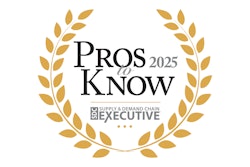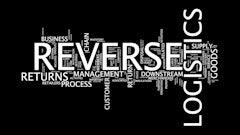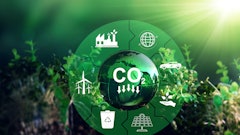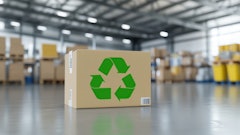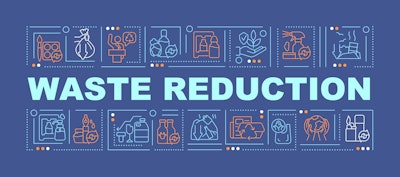
As warehouse facilities contend with increasing pressures from regulators, consumers, and investors to be stewards of the environment, sustainable practices in waste logistics are more important than ever. Effective waste processing not only mitigates environmental impacts but also aligns with evolving compliance standards.
Those managing supply chain operations understand the importance of end-of-year cleanouts in organizing warehouse space and managing inventory. If accomplished with sustainable waste processing practices, the large volumes of waste generated don’t hinder a company’s sustainability commitments. The EPA’s waste hierarchy serves as a guide for reducing waste, maximizing resource recovery and diverting waste from landfills.
The waste hierarchy model organizes waste management into four tiers: Source Reduction and Reuse; Recycling/Composting; Energy Recovery; and Treatment & Disposal. While landfill avoidance may intuitively seem beneficial, understanding the full benefits and implementing processes that align with the hierarchy can reveal additional economic and environmental value.
The Role of the Waste Hierarchy in Supply Chain Operations
Distribution centers and warehouses can clutter quickly with excess stock, including expired and returned products. A once-a-year clear-out is a feasible measure to help warehouse managers keep inventory organized. Practices above “Treatment & Disposal” not only avoid the environmental toll of landfill use but also open opportunities to reclaim value from materials traditionally written off as waste. For instance, most non-sellable items in warehouses can be processed through Thermal Treatment Facilities (TTFs) for energy recovery, while the rest can be reused, composted, or sent to specialized processing facilities.
The benefits extend beyond environmental impact. With rising storage costs and the growing need for efficient waste removal, moving waste higher in the waste hierarchy helps businesses avoid storage fees, limit liability and create a more resilient supply chain operation prepared for future demands. Ultimately, waste can be a resource, and a year-end clear-out can be just as beneficial to a company’s sustainability scorecard as it is to its operations.
Sustainable Waste Solutions That Deliver Impact
Two high-impact sustainable waste solutions include waste-to-energy processes at TTFs and the production of alternative engineered fuels (AEF) for cement kilns and other industrial uses. TTFs have proven 10x more effective than wind and solar at reducing greenhouse gas emissions when accounting for the benefits of landfill methane avoidance. Successful recent instances of this include a food service company that faced 750 truckloads of expired products in their warehouse, requiring urgent disposal to free up space and avoid regulatory risks. The waste-to-energy process converted organic waste into power for the local utility grid.
The alternative engineered fuels (AEF) process is a route best suited for waste streams with low-moisture content, especially in areas near cement or lime kilns where the fuel is in highest demand. The waste-turned-fuel not only reduces the kilns’ reliance on traditional fossil fuels like coal but also integrates the residual ash into the cement formula, creating a closed-loop cycle.
Staying Ahead of Regulatory Requirements
Diverting waste from landfills is critical in the increasingly stringent regulatory landscape that corporations and their storage facilities must adhere to. Aside from financial penalties, companies that use landfills face public backlash if the landfill negatively impacts nearby communities. These impacts can involve the release of harmful pollutants, leachate leakage, foul odors, and health concerns tied to poor air and water quality.
Federal and state regulations impose standards for various waste types, including universal, hazardous, and non-hazardous materials. The complexity of handling different types of waste – each with its own requirements for storage, transportation, and processing – calls for a strategic approach. When recycling or innovative reuse like the AEF process are not feasible, TTFs offer a safe and compliant alternative.
The Role of a Turnkey Provider
The complexity of sustainable waste logistics drives many corporations to seek support from trusted turnkey providers. This full-service support enables companies to maintain compliance, enhance operational efficiency and make progress toward their sustainability goals.
As the end of the year approaches, warehouse managers have an opportunity to organize storage space and manage inventory, and utilize partnerships to maximum compliance, efficiency and environmental impact.







